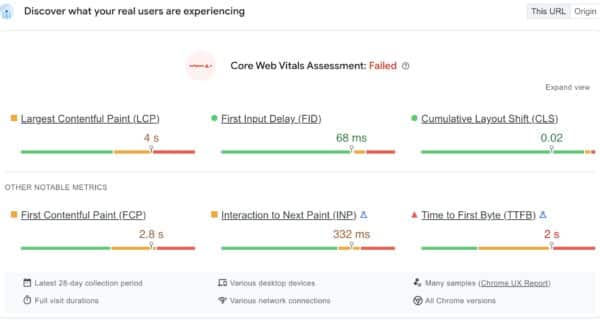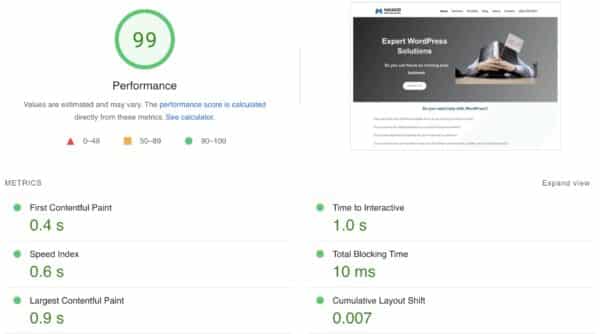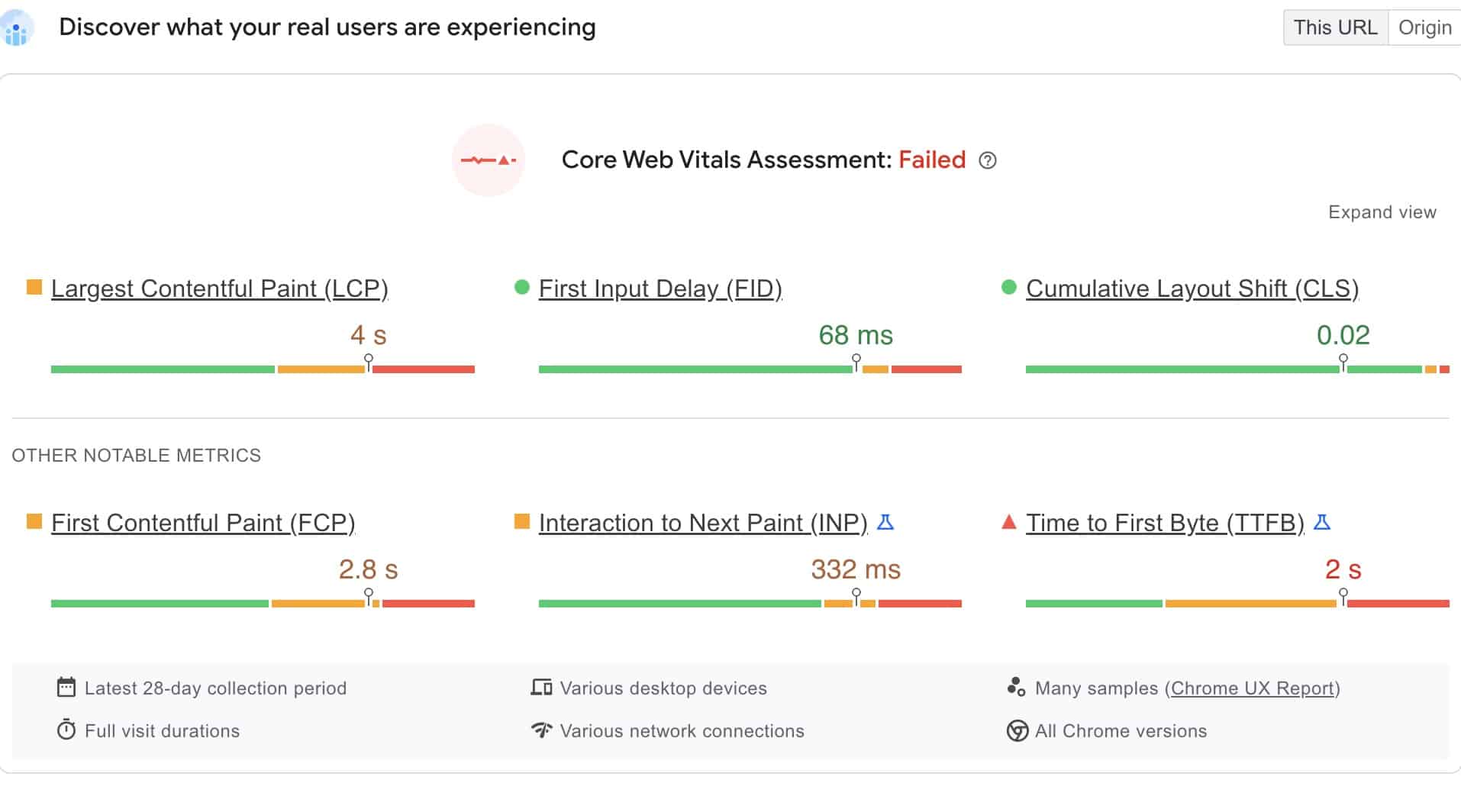At Majaid Web Solutions, we have worked on over 350 WordPress websites. We have provided solutions to a variety of problems. Over time, we have noticed several trends when dealing with problems experienced by small business owners. It seems that four problems keep occurring resulting in clients reaching out for support. Here are the four most common WordPress problems we are asked to solve.
Problem 1 – Poor Performance
A slow website is the number one issue that will cause visitors to leave a website. Studies have shown that if users need to wait longer than three to five seconds for the website content to load, they’ll become frustrated and leave. Once they leave, most will never return. There are numerous things that cause slow loading, ranging from too many plugins, slow theme, wrong image sizes, poor web hosting package, and poorly written custom code.

Page loading time one of the page ranking factors used by Google. A faster website tends to rank higher in with search engines. Google says that a poor user experience is directly related to a slow performing website. We use several website testing platforms to test website performance, our favourite website is GTMetrix.
Next, we do a deep dive into discovering what is causing a website to load slowly. We examine the number of plugins installed (some plugins are known performance hogs), which themes is activated (we typically use an optimized Divi them but there are others that are fast loading), any custom coding (not all custom code is written with performance in mind, web hosting (most shared web hosting packages are not optimized for WordPress).

Once we finish our discovery process, we implement an optimization plan to improve the page loading speed of your website. A fast website helps improve the visitor experience.
Problem 2 – Hacked Website
The second most common WordPress problems deals with a lack of security. Website security is something that website owners overlook, until a hacker gains access to your website. We receive numerous phone calls and emails from panicked business owners saying they have been hacked. Sometimes, the hack is merely cosmetic (changed the content of the website). Other times, the website does not function at all, is redirecting to a different website, is sending out spam email and the domain has been blacklisted, or they are locked out of the website. Hackers attack vulnerabilities of WordPress, most often they get in through old or abandoned plugins, older WordPress versions, and outdated themes.

The first step is gain access to the backend. We have different ways of getting into a WordPress website through FTP, cPanel, and File Manager. Next, we take a copy of the website and download it to our isolated local web server. Then we dig into what the hack is, most times the problem is malware in a WordPress directory or actual code changes to WordPress files. We remove the hacked content. Fix how the hacker gained access in the first place. Then we harden the website with Wordfence (the world’s best security platform). We regularly monitor the website looking for further hacking attempts and locking out potential hackers.
Problem 3 – Update Breaks Website
WordPress does not have a built-in updating system. As WordPress is a self-hosted solution, website owners must handle updates on their own. Sometimes, WordPress will force a core update to run (most times due to a known security issue and they will push a fix). Other times, themes and plugins will release updates that are not thoroughly tested. When a compatibility issue occurs, the effects can range from a plugin not functioning properly to the whole website refusing to work and visitors are presented a blank screen.

Website owners want to update WordPress, the theme, and all plugins. But they are afraid the update will break something break that they’re incapable of fixing. Because updates have a likelihood of breaking a website, owners tend to leave their website as is, which leads to potential security issues.
We use a multi-step process to update our client’s WordPress websites. The process starts with making a full backup of the website (sometimes we break websites when updating so we always make a backup). For outdated websites, we will install a copy of the website on our local testing server. We then run the update process following a set routing (plugins, themes, WordPress core). We look for abandoned plugins and find suitable replacements. Finally, we do several tests on different PHP versions to see if we can gain a performance improvement from a newer version of PHP.
After updating and testing the local version of the website, we complete the updates on the live website. Most often we install the updates after hours to limit the amount of downtime experienced while updating. We recommend setting up a regular schedule for updating WordPress.
Problem 4 – No Backups
The last of the most common WordPress problems is one that can help solve major headaches for small business owners. WordPress does not have a built-in backup system. Most shared hosting platforms also do not provide regular backups. Some hosting platforms will provide a system backup, but they store the backup on the same server. The problem we see most is a website goes down and we ask for a copy of the latest backup so we can do a recovery. Most times, the answer is we don’t have a backup system.
If the backup is on the same server and the server goes down, the chances of recovering a website is difficult. This happened to the OVH data centre in France that caught fire and their backups were in the same data centre. Some websites were offline for months, and some required rebuilding from scratch.

This solution is fairly simple, make regular backups and store the backup on a third-party location like Dropbox of Amazon Web Services file system. We set up a regular backup schedule (based on how often the website changes – static websites can be monthly while e-commerce websites can be full weekly backups with hourly database backups). We encrypt our backups and safely store them on offsite storage.
Once we have a successful backup system started, we will regularly do a test recovery on our local testing server. Not being able to recover a website from a backup is almost as bad as having no backup at all. We will test backup recovery as part of our regular website backup service.
Have you experienced any of these common WordPress problems?
Let’s chat!

